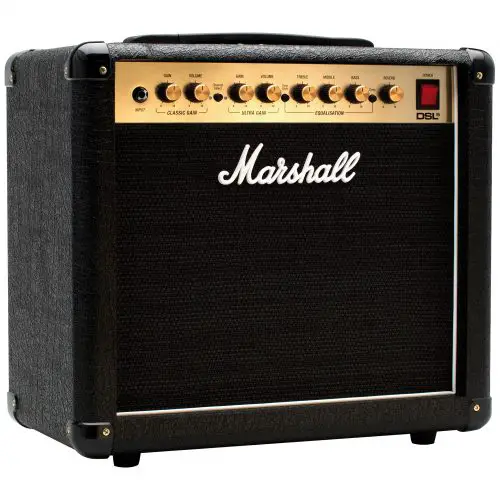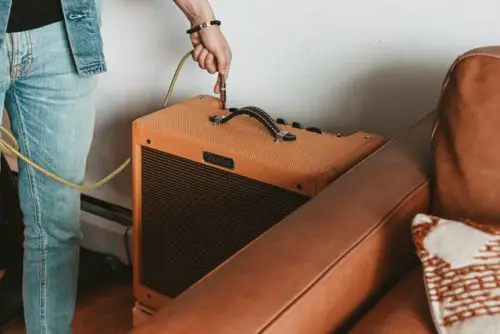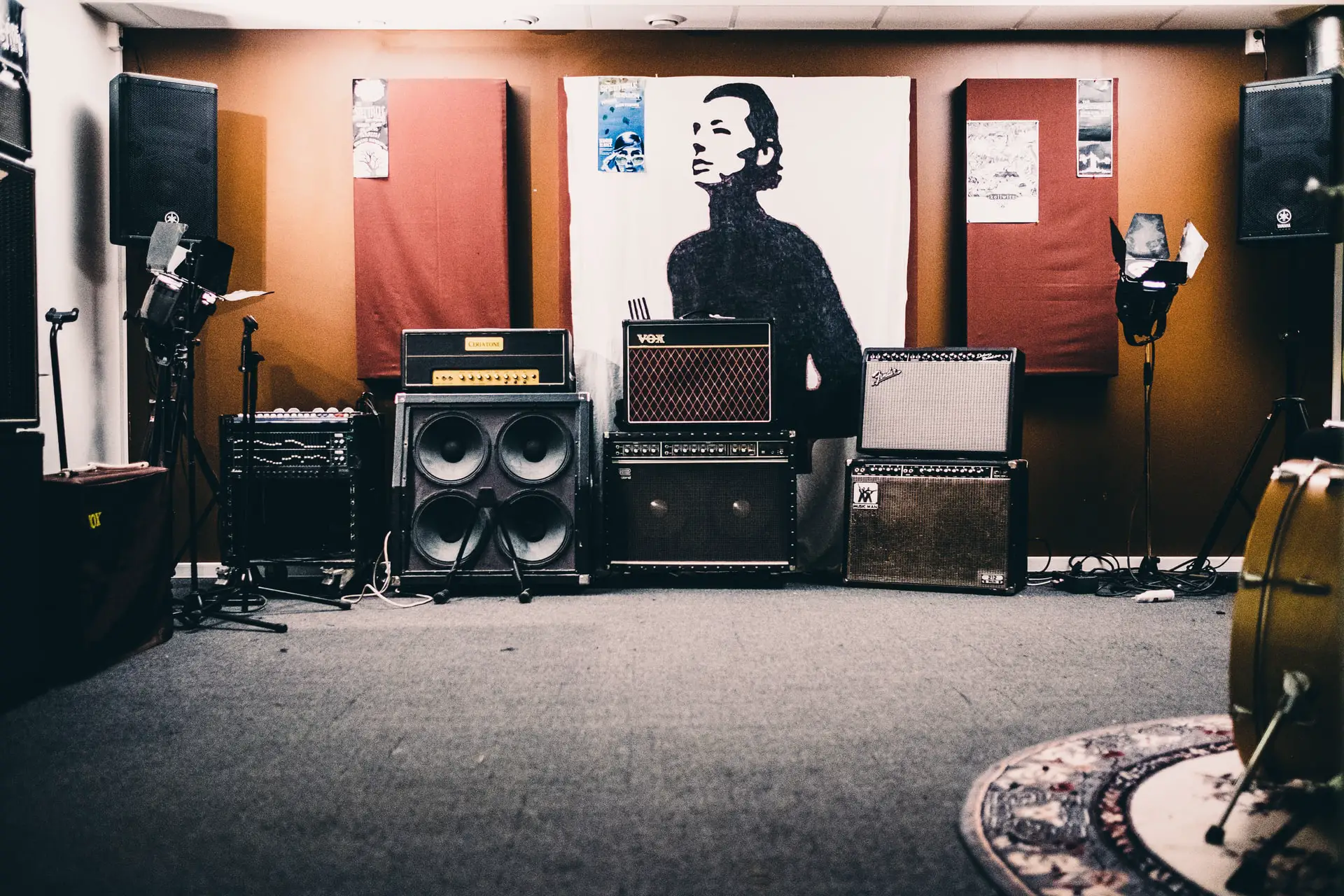A guitar amplifier has limited frequency ranges when compared to a speaker. A guitar amp will produce low quality and muddy sound when used as a speaker.
Also, a better speaker is much more important than an amp. A good guitar speaker can produce far better sound than a good amp can.
Speaker is the component responsible for playing out the audio, whereas an amp is responsible for strengthening the weak signals coming from a guitar.
An amplifier works by making copies of signals coming from the guitar body, (each copy being larger than its predecessor) increasing its strength and sending it to the speaker which then plays whatever sound is sent to it by the amp. The speaker changes the electrical energy that was transferred from the amp into acoustic energy.
In other words, speakers make sound, amps make the speakers help produce sound. I know, the difference seems a bit obvious, but it occurred to me that the differences between devices that generate acoustic waves in our homes and boxes that use electrical waves to power them are more complex than at first glance.
In this article, I will help you understand some basic differences between a guitar amp and a speaker.
- How is a guitar amp different from a speaker?
- Are both components equally important?
- Can I use my guitar amp as a speaker?
- How to convert a guitar amp into a speaker
- Should I turn my guitar amp into a speaker?
- Ways for great guitar amp tone
Guitar amp vs speaker: key differences
| Speaker | Amplifier | |
| Purpose | Plays stereo sound with a wide frequency range. | Amplify signal from instrument to produce sound |
| Importance to sound | High
Better quality speaker means better sound |
Low
Average quality amp is good enough |
| Frequency ranges | Wide | Limited
Mostly mids |
We have already looked at the basic principles of both these components, one produces sound the other helps it produce the sound. Obviously, a speaker is different in many other ways than a power amplifier.
A speaker is mechanical in nature. It has various electrical properties that animate its mechanics.
An amplifier, however, is electrical. It means that we can not hear or see what goes in or comes out. Still, we are asked to make choices based on nothing more than the reviews we read online and the sounds we hear.
But remember that even though we can hear sounds from a speaker, we can not use the same mechanism to judge the quality of an amp.
Following differences may help you understand how an amp and speaker work, more clearly.
Speaker Vs Amp: Which Is More Important To Audio?
Speakers are more important than amplifiers because speakers are the ones that decide the tone of the guitar.
For your guitar to produce a better-quality sound, you should invest more money in speakers rather than on an overly priced amplifier.
An average quality amp can suffice but when it comes to the speaker you should buy the best ones you can afford.
A cheap amp will perform very well with only 0.1% distortion. Noise does make a difference but if it is low enough it is generally not noticeable.
On the other hand, poor-quality speakers have a distortion range of 3% to 5% and have all kinds of imperfections. Since speakers produce the sound, buying a cheap speaker will only lead to poor performance.
In my opinion, you should definitely and always focus 90% of your budget on speakers. They are the end result of any fine audio system, and a high-end speaker will sound really nice with a run of the average amplifier.
The reverse, however, is less true. When you spend money on electronic devices, like speakers, you get what you pay for. The more the better. Most of the time, recording studios would use a $4000 amp for a $15000 speaker.
You can always upgrade your amplifier whenever you want. It is much harder to design good full-range speakers than a low-distortion amplifier.

A good speaker is always more important than an amp. When getting an amp that comes with speaker – always look for speakers with more power and test the speakers out in store.
Speaker Vs Amp: Power Capability
Speakers are sensitive when it comes to handling power and can only handle a limited amount.
Amp watts is the maximum amount of power the amp can possibly put out but speaker watts is the maximum amount of power the speaker can handle before the voice coil melts.
If the power supply is more than what a speaker can handle, it will burn out.
Before choosing an amp for your speaker make sure you know how much power your speaker can handle before it surprises you on stage or even during practice.
Can I turn my amp into a speaker?
You can turn a guitar amp into a speaker to play music but the sound will be muddy and low quality. Guitar amps have limited frequency ranges when compared to stereo speakers.
For instance, a bass guitar amp can produce very low frequencies, but when it comes to high frequencies, they do a very poor job.
A guitar amp can play some low frequencies and some high frequencies, but most of the time, they focus solely on mid-range frequencies that make sense for guitars.
What this means is that if you try to play music through a guitar amp, it will likely sound muddy and low-quality when compared to a speaker system that has a wide frequency range.
While you might be able to use the guitar amp’s EQ to try and compensate, but still do not expect extraordinary results.

It is possible to use guitar amp as speaker but the sound output won’t be great. An amp’s frequency range is limited.
How do I turn my amp into a speaker?
When turning amp into amp into a speaker, make sure the volume is always turned down. An amp works by amplifying incoming signals – it’s suitable when used with weak signal instruments like electric guitar.
Directly playing a strong signal (from audio player) with high volume could damage the amp.
follow these step to turn your amp into a speaker without blowing it up,
- Turn the master volume on your guitar amp down to a low level
- Turn the volume on your audio player down
- Connect your audio player to the Aux Input using a 3.5mm cable
- Play the audio player and gradually raise the volume of the audio player.
- The last step is to raise the guitar amp’s master volume to reach the volume level that suits your preference.
If you follow these steps carefully you will protect your guitar amp from blowing up by feeding it a high-volume source while it is cranked too high.
One of the things that you have to remember is that most guitar amps are not designed to deal with extremely high or low frequencies, so take proper precautionary measures and be careful every time you connect something into your amp’s Aux input.
Should you use a guitar amp as a speaker?
Guitar amps are not made to be used as speakers therefore it is advised not to use them as one.
Turning a guitar amp into a speaker has its limitations and it does not even enhance the sound quality.
If you are not fully familiar with the process you might burn out the amp. It is a very delicate procedure.
Keep these 4 tips in mind when using a guitar amp as a speaker. Otherwise, you risk damaging the amp.
- Use a guitar amp as a speaker only for less than 30 minutes. Using it longer can make your amp sound dull and distorted. This happens to me after using it for a few hours continuously.
- Lower the bass volume. You can use your music player to lower its bass when playing music through a guitar amp. Guitar amps have limited frequency ranges and are focused on the mid range. Lower the bass for better sound quality.
- Use an open back cabinet for your guitar amp. Open back helps to reduce bass – which is important for sound quality if you are using a guitar amp as speakers.
- Update the music player’s sound output to mono. Guitar amp is not a stereo device. To use it as a speaker, use the music player’s software feature to output the music as mono.
5 WaysFor a Great Guitar Amp Tone
At the beginning I mentioned that an average amp is always good enough. What matters most is the speaker used.
In this section, I want to share 5 easy ways to improve the sound from your amp (even when the speaker in your amp isn’t good).
1. Raise The Mid-range
A mid-range is what makes your guitar stands out, try raising it to see how better it performs while being with a band or a backing track.
Try not to raise it too high as it can make your guitar sound nasally and muddy. The steps you can take to make sure you raised it just enough are following:
- Start with your bass, mid and treble knobs all at 12 o’clock
- Play guitar along with a backing track and see about how it sits with the other instruments
- Raise the mid slightly and listen to how it changes your tone
- Raise the mid and playing until it’s all the way up
- Start dialing the mid-back to low, until you find the perfect spot
- Adjust the bass and treble slightly according to your preferences.
2. Lower your gain
When you roll the gain back, you start to get more clarity. The further back your roll the gain, the more clarity you hear until you end up with a clean tone.
When you have the gain up high, the tone is so distorted that it becomes a wash. As soon as you play with a backing track or in a band, the over-the-top distortion gets buried in a sea of noise.
3. Change the position of your amp
The position of the amp matters a great deal. A slight adjustment in the angle, distance, height from the surrounding speakers can change the end result completely.
This is a simple and basic tip that is overlooked by many. To make the best use of your amp make sure it is in either of the following positions :
- On the floor hard against a wall
- On the floor away from the wall
- On a table
- On a carpeted floor
- On a tile floor
- Angled 45 degrees pointing up
4. Use your pickups wisely
What pickup you chose can mean either a really good quality sound or a horrible tone.
As a simple guide, any time you learn a new song play around with pickup choices for each and every section. Experiment and hear how the verse, chorus, and solo sections sound with each pickup option you choose. You will eventually get a feel for what type of parts match up to different pickups.
Make sure you learn to match the right pickup choice with the guitar amp setting as it plays a massive role in the tone of the guitar.
5. Get fresh strings
Dull sound does not necessarily mean your amp needs to be upgraded, you just need fresh new strings.
The more the passes the more your strings will become dull, and it happens so slowly that you may not even notice at first.
If you have been playing every day for the last few months, it is now time that you need new strings.





